Cybersecurity continues to be a pressing issue for government, corporations, and higher education. Just as the fall 2023 term began, a cybersecurity incident forced the University of Michigan to shut down campus internet connections for two days. Students had to find workarounds using cell phones and off-campus computer networks to access some materials. More broadly, the recent cyberattack on the MOVEit file transfer service is believed to have impacted at least 173 US colleges and universities.
Cyberattacks are also expensive. According to a recent study by IBM, cybersecurity breaches cost organizations an average of $4.45 million in 2023, up 2.3 percent from 2022 and 15.3 percent from 2020. The study found that 51 percent of organizations plan to increase their security investments due to a breach.
How is this affecting cybersecurity programs at higher education institutions? Do we have enough interested students and programs? Will there be jobs for program graduates? Let’s have a look.
A Doubling of Graduates in Cybersecurity
Let’s start with completion trends. How many students are graduating from cybersecurity programs? The short answer is more and more every year.
Completions of cybersecurity programs across all award levels increased from 2016 to 2021, growing from 10,013 graduates in 2016 to 23,746 in 2021. This represents an average annual growth rate of 19 percent, much higher than the one percent annual growth for all programs during this time. Interestingly, on-campus and online completions grew at about the same rate. For many other programs, online completions have increased much faster than on-campus.
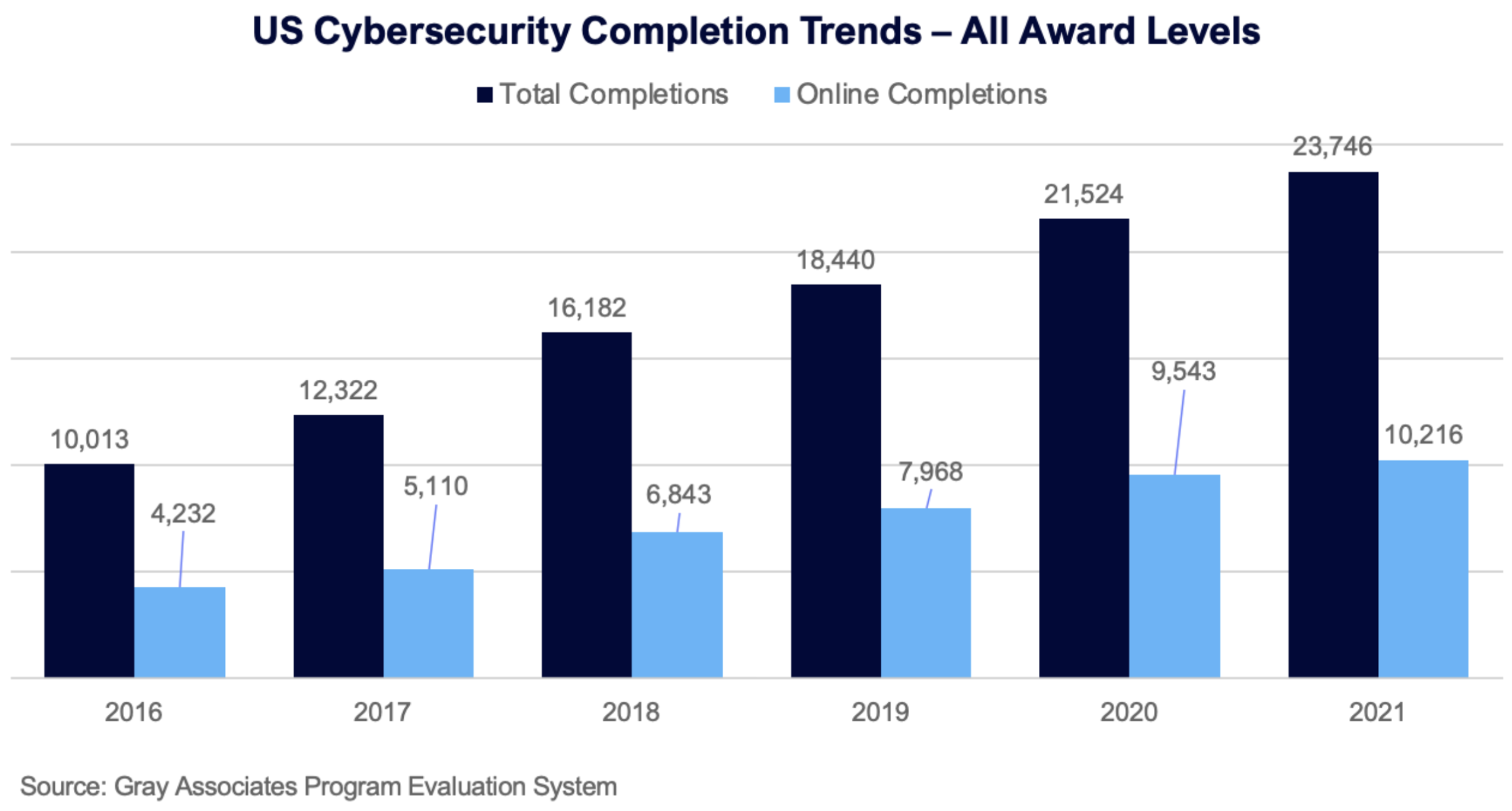
Bachelor’s programs comprise the largest share of cybersecurity completions, with 28 percent of all completions in 2021. Master’s and undergraduate certificate programs each accounted for a 25 percent share of 2021 completions. Associate programs accounted for a 15 percent share, graduate certificates comprised a six percent share, and doctoral programs were less than one percent. Importantly, all award levels experienced a growth in completions from 2016 to 2021.
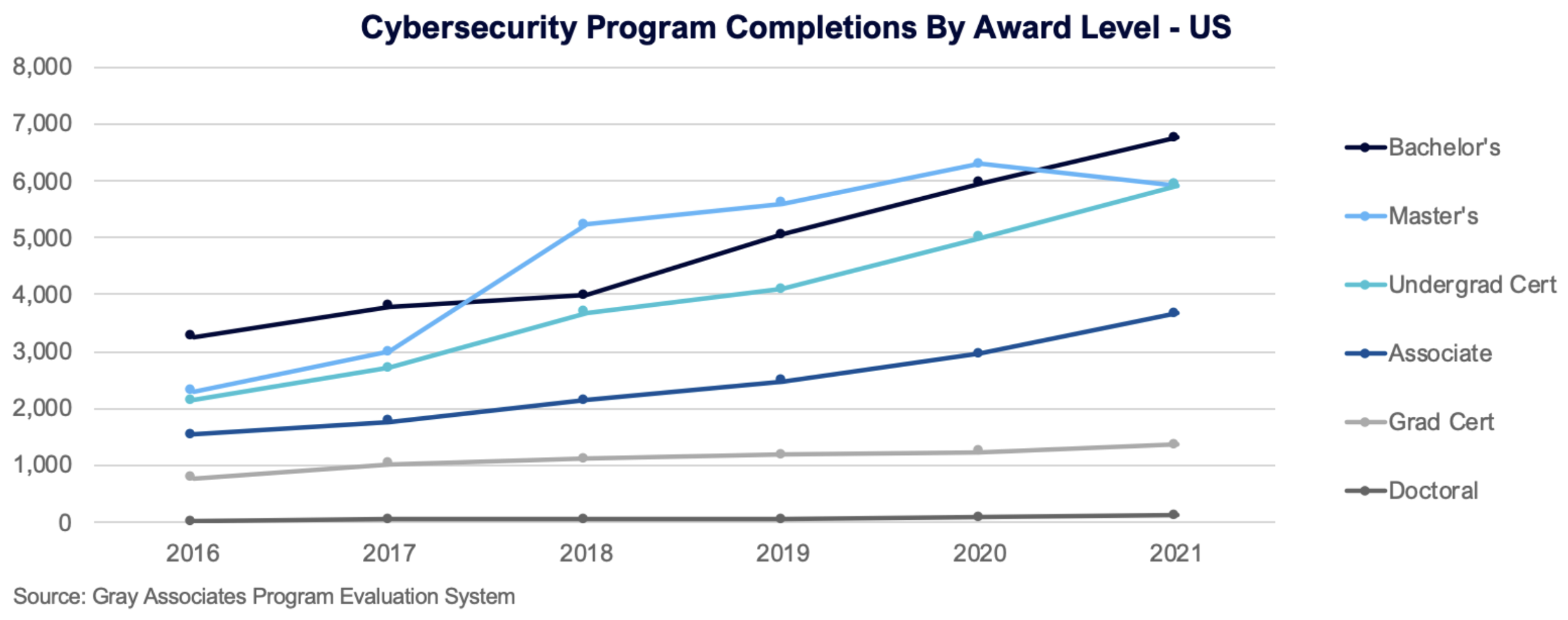
Cybersecurity Undergraduate Enrollment is Trending Up
Completions are an important but lagging indicator of student demand, representing program decisions made several years ago. A more current indicator of student demand for academic programs is enrollment. Gray’s data from the National Student Clearinghouse tracks two enrollment metrics: total enrollment and new student enrollment.
Let’s start with total enrollment, which grew on average 15 percent annually across all award levels from fall 2018 to fall 2022. As with completions, bachelor’s programs enrolled the most students and accounted for half of all enrollment in fall 2022.
Interestingly, cybersecurity programs at the community college level are seeing significant enrollment gains. Associate programs accounted for 27 percent of total enrollment in fall 2022 after experiencing annual enrollment growth of 16 percent from fall 2018 to fall 2022. Undergraduate certificate programs accounted for six percent of total enrollment in fall 2022, growing 17 percent annually from fall 2018 to fall 2022.
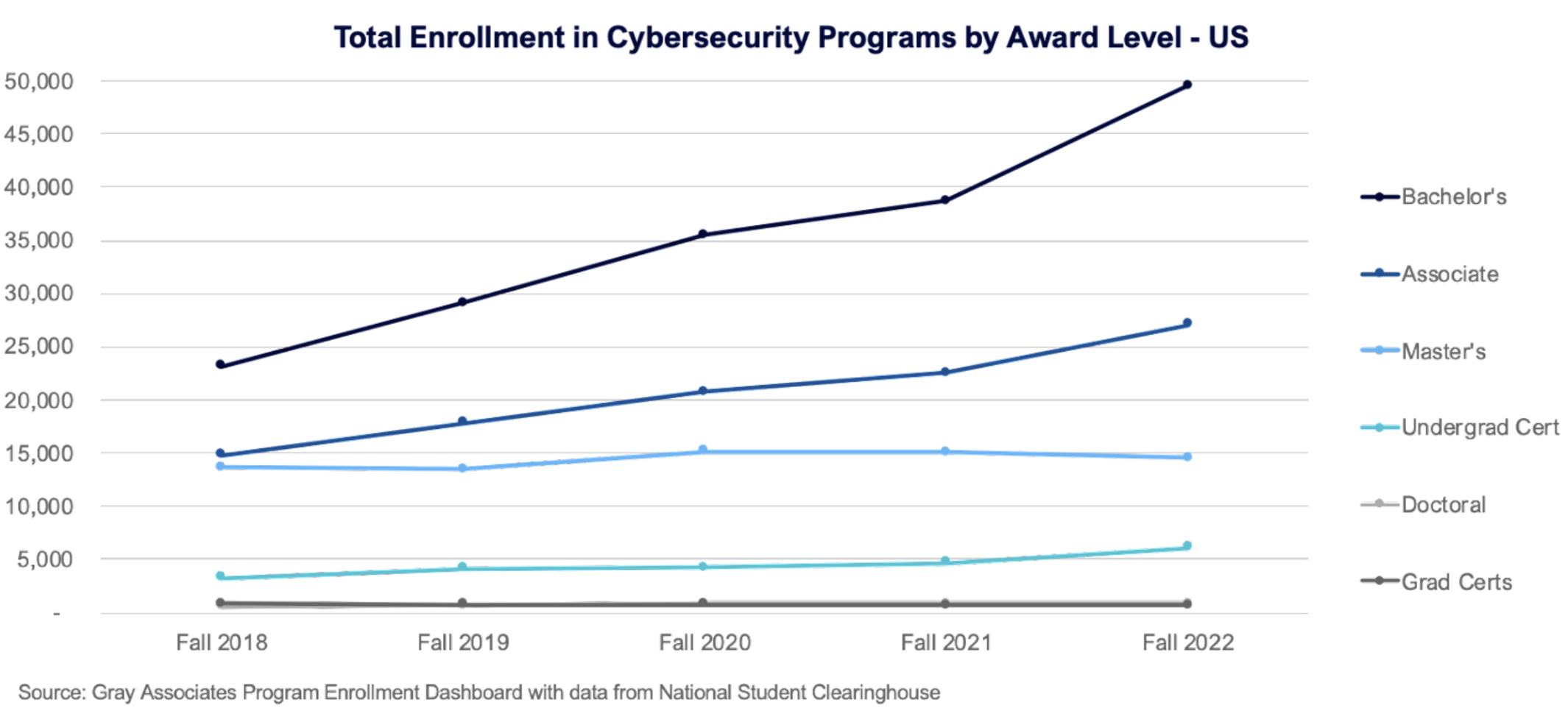
Another good news is that new student enrollment in cybersecurity programs is also growing, indicating student interest in the program remains strong. The number of new bachelor’s students doubled from 3,573 in fall 2018 to 7,142 in fall 2022. At the community college level, the number of new associate students grew by 82 percent from fall 2018 to fall 2022, and the number of new certificate-level students increased by 93 percent.
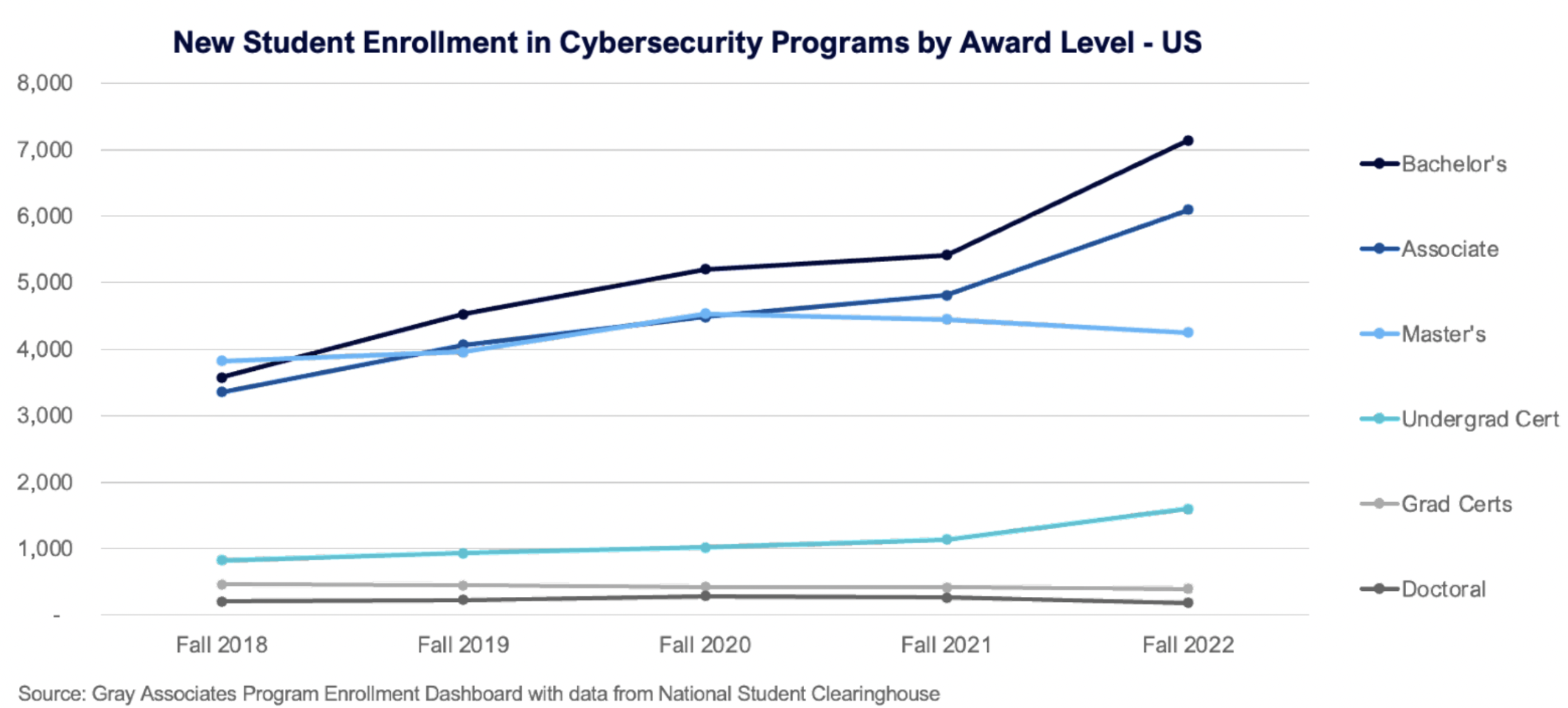
On the flip side, we are seeing slight declines in new student enrollment at the graduate level. The number of new students enrolling in graduate certificate programs fell by 14 percent from fall 2018 to fall 2022, and the number of new doctoral students dropped by 10 percent.
Employment Opportunities Are Strong for Cybersecurity
With more students enrolling in and completing cybersecurity programs, it is important to check the employment landscape to ensure adequate employment opportunities for graduates.
From January to July 2023, Gray tracked over 334,000 job postings for occupations related to cybersecurity programs posted by over 67,000 companies. The average salary was $93,183.
Over 90 percent of these jobs require some sort of higher education credential; 44 percent require a bachelor’s degree.
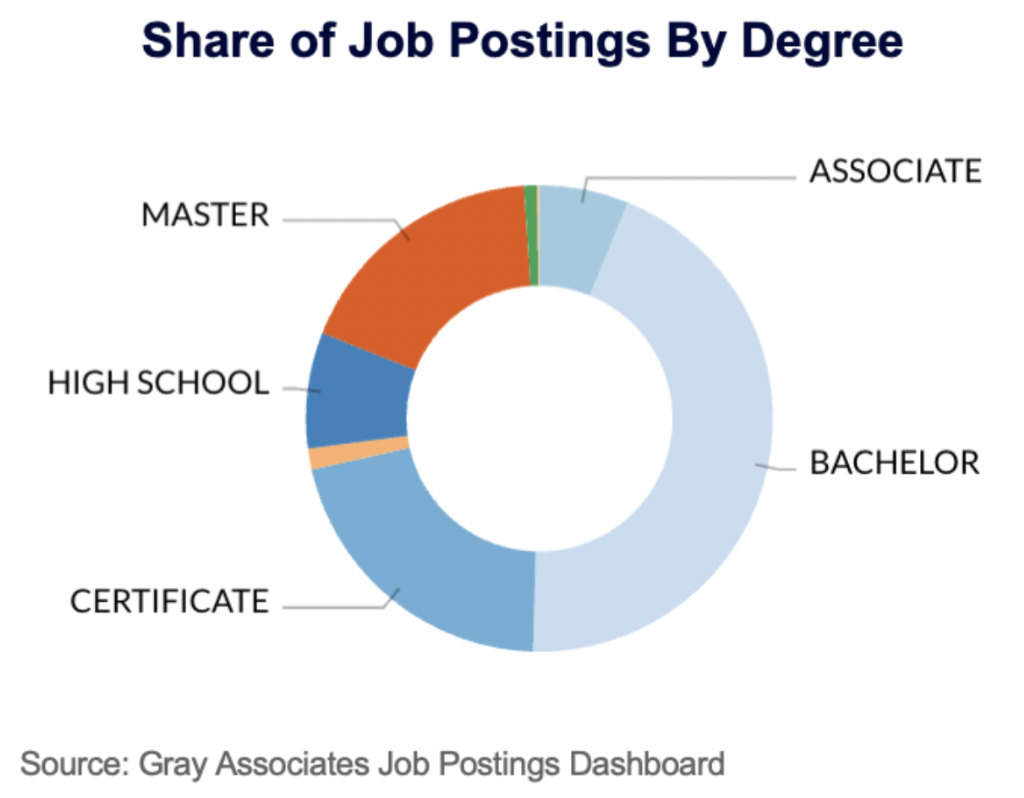
There are several programs with graduates competing for the same jobs as cybersecurity graduates (e.g., computer science). Considering this, there are still 7.4 job postings per cybersecurity graduate annually, which is well above the average program. In our view, the job market for these graduates will be very healthy for the foreseeable future.
Grow Your Workforce
Interestingly, Education is among the industries generating the most job postings for occupations related to cybersecurity programs, although the pay is lower, with an average salary of $64,284.
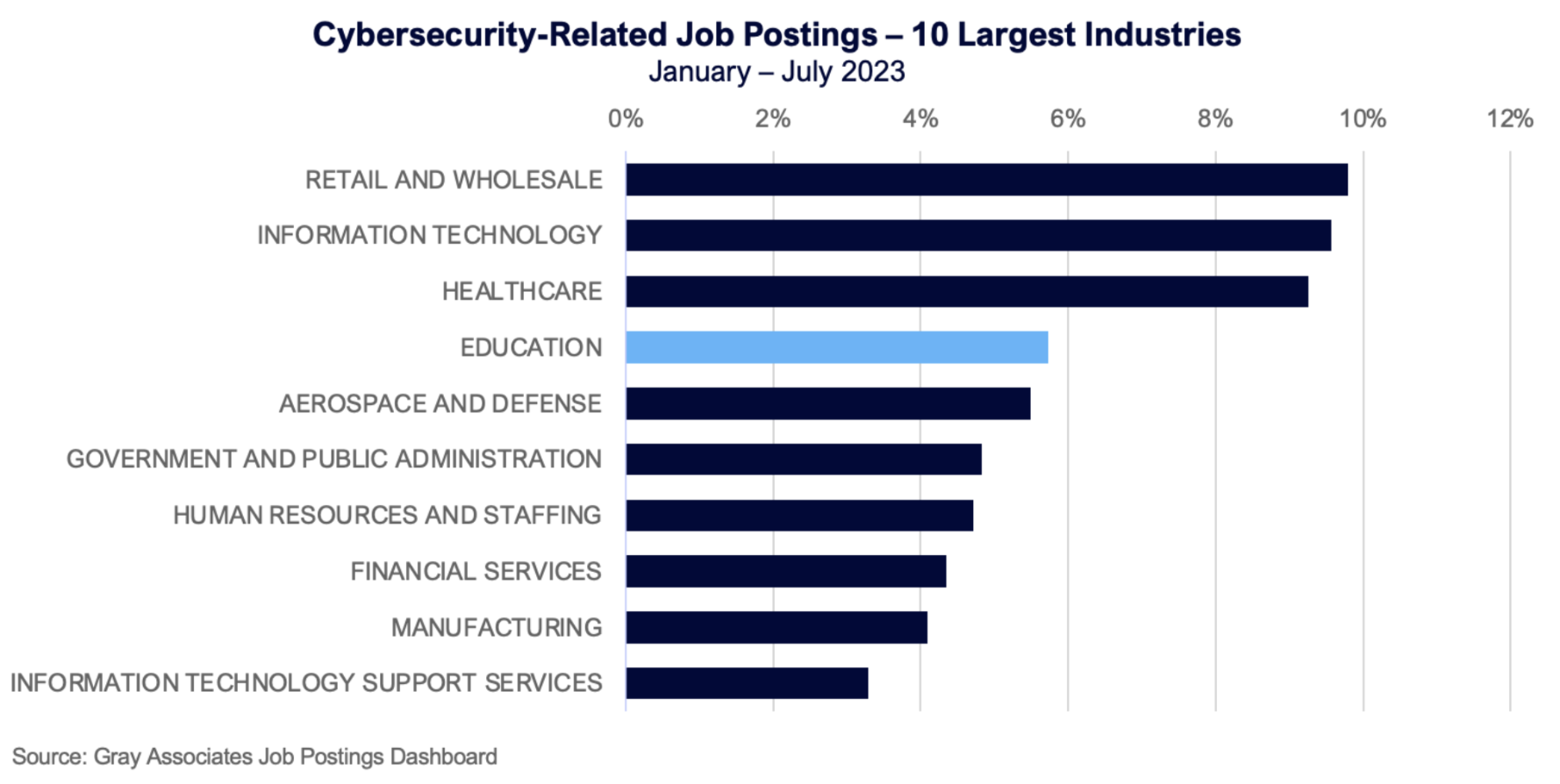
At the same time, colleges and universities face more sophisticated cybersecurity threats to their institutions. They are also producing graduates who can help defend against them. If they can employ their students after graduation in cybersecurity roles, this may be a win-win situation for all.




